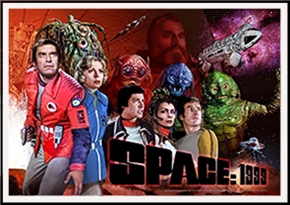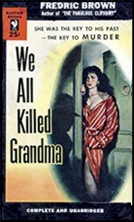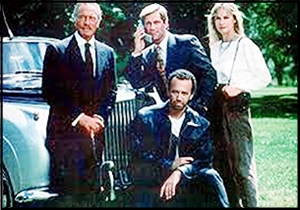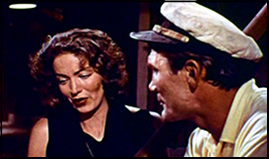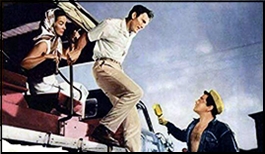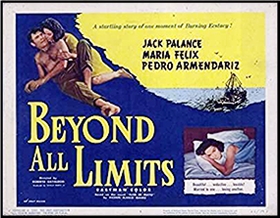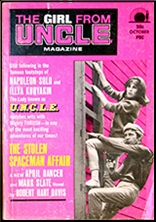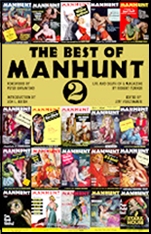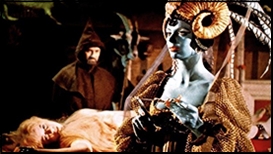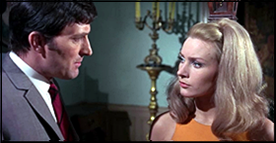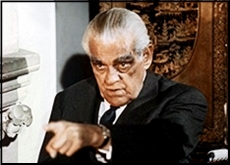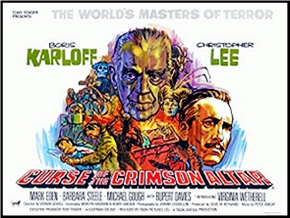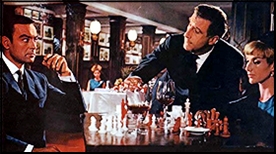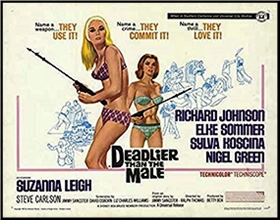Sun 31 May 2020
A Sci-Fi TV Episode Review: SPACE: 1999 “The Metamorph†(1976).
Posted by Steve under Reviews , TV Science Fiction & Fantasy[14] Comments
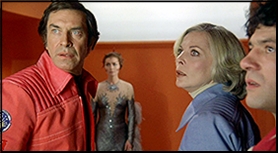
SPACE: 1999 “The Metamorph†ITC (UK); first run syndication (US). 04 September 1976 (Season 2, Episode 1).. Martin Landau (Commander John Koenig), Barbara Bain (Dr. Helena Russell), Tony Anholt, Nick Tate, Zienia Merton. Guest cast: Catherine Schell, Brian Blessed. Format creators: Gerry Anderson and Sylvia Anderson. Writer: Johnny Byrne. Director: Charles Crichton.
The premise of this series was laughable at best if you were to look at scientifically: an explosion on the Moon would be sufficient to throw it out of its orbit and head it traveling at apparent light speed out into outer space. (In reality such an explosion would have the Moon come crashing down on Earth or blow it up entirely.)

But given enough suspension of disbelief, which I could at the time, and I still can now, this mean that the 300 plus inhabitants on the Moonbase there would have the trip and adventures of their lives. The special effects were both top notch and spectacular. The stories? Not so much.
But truth be told, I enjoyed Space: 1999 more than I did Star Trek, which I often found boring and preachy. If it hadn’t been for Spock’s ears, the show would have gone nowhere. But I digress. Suffice it to say that the stories in Space:1999 were probably not as good as those as Star Trek’s, but while people may disagree with me on this, I found them a lot more fun.
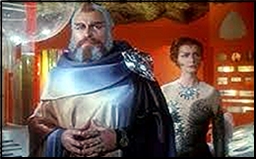
Case in point. In “The Metamorph,†the folks on the space traveling Moon are running out of titanium (if I remember correctly), and a what they think is a barren planet looks like a promising place to find some. Not so. The ruler of the underground civilization named Mentor – the ruler, not the planet – takes a survey crew captive, and plans to do the same to the rest of the crew. The reason? To suck the energy from their brains to feed his biological computer, which he plans to use to replenish his planet.
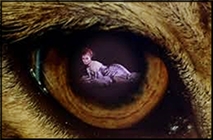
It’s a close call, but everyone escapes, just in the nick of time, thanks to, .. Well, I guess I won’t tell you, but as a hint, one of the members of the guest cast above turns out to become a regular member of Moonbase Alpha for the rest of the second season. (There were only the two.)
As I say, the story is weak. If you haven’t read and seen a version of it before, you probably haven’t read or watched a lot of sci-fi. But watching this last night brought a lot of good memories. All of a sudden I was a 30-something again.
